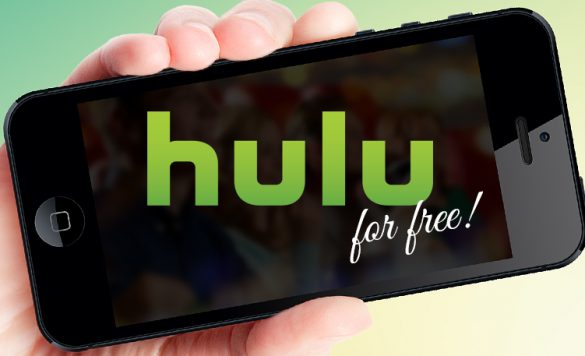Save Money by Cutting Out These 14 Common Unnecessary Expenses
Updated on: by Amy Kennedy
Are you looking for ways to boost your savings and achieve financial freedom?
Need Easy Extra $350+/Month For Free?
- SwagBucks: Watch videos, take surveys, shop and more to earn real money. Earn up to $35 per survey! No hidden fees and completely free. Join Swagbucks Now to Get $5 Free
- InboxDollars: Has so far paid its members over $40 Million. Watch videos, take surveys, shop and more. Join InboxDollars Now and Get Free $5
- SurveyJunkie: Make $5-$25 in your spare time from home to take online surveys, participating in a Focus Groups and trying new products. Join SurveyJunkie Now
- Branded Surveys: Complete online surveys. Collect points. Redeem your points for cash & gift cards. No hidden fees and completely free! Has so far paid its members over $18 Million. Join Branded Surveys Now
Consider this: every day, we unknowingly shell out money on various unnecessary expenses that, when tallied up, can significantly impact our overall financial well-being.
From those daily coffee shop visits to impulse online shopping sprees, these expenses quietly drain our wallets, leaving us with less money to invest in our goals and dreams.
This blog post sheds light on these common, often overlooked, money-sucking culprits and show you how to cut them out of your life.
Common Unnecessary Expenses You Can Cut to Save Money
Below are some expenses you don’t necessarily need. Cutting them will help you save more money.
1. Unused Subscriptions
Unused subscriptions can quietly drain your bank account without providing any real value.
Many people forget about memberships to streaming services, magazines, or gyms that they no longer use.
To save money, make a list of all your subscriptions, both digital and physical, and evaluate their necessity.
Cancel any that you haven’t used in the past few months or that duplicate services you already have. This simple step can free up a significant amount of money each month.
Unused subscriptions often accumulate because they are easy to forget, especially when they are billed automatically.
By taking the time to review your subscriptions regularly, you can identify those that no longer serve a purpose.
For example, if you signed up for a streaming service to watch a specific series and haven’t used it since, it’s a clear candidate for cancellation.
This proactive approach not only saves you money but also helps declutter your financial life.
2. Impulse Shopping
Impulse shopping is a common and costly habit. When you buy items on a whim, you often end up with things you don’t need.
To curb impulse shopping, create a shopping list before going to the store and stick to it.
For online shopping, place items in your cart but wait at least 24 hours before making a purchase.
Need Easy Extra Cash?
Pinecone Research, a leading name in online survey panel honesty, absolutely guarantees $3 cash for every survey you complete!
Take advantage of their time limited New Membership drive and register NOW. Join today: 100% free!
Join Pinecone Research Now
This waiting period allows you to reconsider whether the item is truly necessary.
Impulse shopping is often driven by emotions and the desire for instant gratification.
By implementing strategies like using shopping lists and delaying purchases, you give yourself time to evaluate whether the item is a genuine need or simply a fleeting want.
Additionally, consider the long-term financial impact of impulsive purchases; the money saved can be better used for important financial goals like saving for emergencies or retirement.
3. Eating Out Too Often
Frequent dining at restaurants or ordering takeout can quickly deplete your funds. While it’s enjoyable, it’s also expensive.
To save money, limit eating out to special occasions and opt for cooking at home more often.
Plan your meals, use leftovers creatively, and explore cost-effective recipes. Not only will you save money, but you’ll likely eat healthier too.
Eating out frequently not only strains your budget but also often leads to less healthy food choices.
Cooking at home allows you to have greater control over the ingredients and portion sizes, contributing to both financial and dietary benefits.
You can also turn meal preparation into a fun family activity, fostering a sense of togetherness while saving money.
4. Premium Cable Packages
Premium cable packages can be costly, especially when you only watch a fraction of the channels available.
Consider downgrading your cable plan to a more basic package or explore streaming services that offer a variety of content at a lower cost.
This switch can lead to significant monthly savings without sacrificing your entertainment options.
Premium cable packages often include a wide array of channels, most of which go unwatched.
By reviewing your viewing habits and opting for a more tailored package or streaming service, you can eliminate unnecessary expenses.
Additionally, streaming services often offer the flexibility to watch content on your schedule, making it a more cost-effective and convenient choice.
5. Brand Loyalty
While brand loyalty can be comforting, it often comes at a higher price.
Generic or store-brand products are frequently just as good as, if not better than, their name-brand counterparts.
Be open to trying these alternatives to save money on groceries, household items, and personal care products.
Brand loyalty can be costly because name-brand products often come with a premium price tag.
However, many store-brand or generic alternatives offer similar quality at a lower cost.
It’s worth experimenting with these alternatives to see which products you can switch without sacrificing quality.
Over time, these small changes can add up to significant savings without compromising on the products you use daily.
6. ATM Fees
Frequent ATM usage, especially at machines that aren’t affiliated with your bank, can rack up substantial fees over time.
Plan your cash withdrawals strategically to minimize ATM fees.
Use your bank’s ATMs whenever possible or opt for cashback options at stores to avoid these unnecessary charges.
ATM fees can be an unexpected drain on your finances.
By planning your cash withdrawals in advance and choosing fee-free options, you can save a considerable amount of money over the course of a year.
Additionally, many banks offer ATM locator tools or mobile apps that can help you find in-network ATMs, further reducing your exposure to these fees.
Earn Everything… nearly!
Join Opinion Outpost, one of the few faithful and honest survey panels and earn cash and gift cards for your opinion. Stack your points and redeem them: Simple! No hidden fees and completely free!
Join Opinion Outpost Now
7. Excessive Utility Usage
High utility bills can eat into your budget. Reduce your electricity and water bills by adopting energy-efficient habits.
Turn off lights when leaving a room, unplug devices when not in use, and install programmable thermostats.
Small changes can add up to significant savings on your monthly utility expenses.
Reducing utility costs not only saves money but also benefits the environment.
By being mindful of your energy and water consumption, you not only lower your bills but also reduce your carbon footprint.
Energy-efficient practices are a win-win, leading to cost savings and environmental responsibility.
8. Daily Coffee Runs
Stopping by your favorite coffee shop daily for your caffeine fix can be a costly habit.
Invest in a good-quality coffee maker and bring your beverages to work or outings.
Making your coffee or tea at home not only saves money but also allows you to customize your drinks to your liking.
Daily coffee runs can add up to a significant annual expense.
By brewing your coffee at home, you have control over the type of coffee you use and can experiment with different flavors and brewing methods.
Plus, investing in a quality coffee maker pays off over time as you enjoy delicious, cost-effective beverages.
9. Unused Gym Memberships
Gym memberships that go unused are a common financial drain. If you rarely visit the gym, consider canceling your membership.
Explore alternative fitness options, such as home workouts, outdoor activities, or pay-as-you-go fitness classes, to stay active without the recurring expense.
Unused gym memberships are essentially wasted money.
By embracing other fitness options, you not only save on monthly fees but also have the flexibility to choose activities that better align with your interests and schedule.
10. Overpriced Phone Plans
Many people overpay for their mobile phone plans.
Shop around for more affordable options that match your usage patterns.
Consider switching to a prepaid plan or exploring mobile virtual network operators (MVNOs) that offer competitive rates on the same networks as major carriers.
Phone plans are highly competitive, and there are often more cost-effective alternatives available.
By reviewing your plan and comparing it to other options, you can potentially reduce your monthly phone bill without sacrificing call quality or coverage.
This can lead to significant long-term savings.
11. Excessive Online Shopping
Online shopping can lead to impulsive purchases and overspending.
To save money, practice restraint by creating a budget for online shopping and sticking to it.
Remove saved payment information from online retailers to create a barrier between you and impulsive buying.
Online shopping provides convenience but can also tempt you to make unnecessary purchases.
Setting a budget for online shopping and sticking to it helps you maintain financial discipline.
Removing saved payment information adds an extra step to the checkout process, giving you time to reconsider purchases and avoid impulsive buying.
12. Fast Fashion
Fast fashion items may seem affordable, but they often wear out quickly, leading to more frequent replacements.
Instead, invest in higher-quality clothing that lasts longer.
Consider building a capsule wardrobe with versatile pieces that can be mixed and matched, saving both money and closet space.
Fast fashion’s low prices often come at the expense of quality and durability.
By opting for better-quality clothing, you reduce the frequency of replacing worn-out items, ultimately saving money.
A capsule wardrobe, consisting of versatile pieces, simplifies your clothing choices and ensures you get the most out of your wardrobe without constantly buying new items.
Passive Income Sources to Increase Cash flow
Here are passive income sources that can help increase your cash flow:
1. Dividend Stocks
Investing in dividend stocks means purchasing shares of companies that regularly distribute a portion of their profits to shareholders in the form of dividends.
These dividends provide investors with a consistent income stream, making dividend stocks a popular choice for passive income.
You can start building a dividend stock portfolio by using online brokerage platforms such as E*TRADE, Fidelity, or TD Ameritrade.
2. Real Estate Rentals
Owning and renting out real estate properties is a time-tested passive income strategy.
Whether it’s residential properties like apartments or commercial spaces like office buildings, rental income can provide a reliable source of cash flow.
Online real estate marketplaces such as Zillow, Trulia, and Realtor.com can help you find potential properties to invest in.
3. Peer-to-Peer Lending
Peer-to-peer (P2P) lending platforms like LendingClub, Prosper, and Upstart enable individuals to lend money directly to other individuals or small businesses in exchange for interest payments.
It’s a form of online lending where you act as the lender and earn interest income similar to a bank.
P2P lending provides an opportunity to diversify your income sources.
You can lend relatively small amounts to numerous borrowers, spreading the risk of default.
Many P2P lending platforms facilitate the lending process and automate payments, making it a convenient way to earn passive income.
Be sure to assess the creditworthiness of borrowers and understand the associated risks before investing.
4. High-Yield Savings Accounts
Online banks like Ally Bank, CIT Bank, and Marcus by Goldman Sachs offer high-yield savings accounts that provide a safe and straightforward way to earn passive income.
These accounts typically offer interest rates higher than traditional brick-and-mortar banks.
By depositing your money in a high-yield savings account, you can generate interest income without the volatility associated with other investments.
These accounts are often easily accessible and can serve as a place to store your emergency fund or short-term savings.
While the interest rates may not be exceptionally high, they offer a stable and liquid source of passive income.
5. Stock Market Investments
Investing in the stock market through online brokerage platforms like Robinhood, Charles Schwab, or Interactive Brokers offers the potential for both capital appreciation and passive income.
You can invest in various financial instruments, including index funds, exchange-traded funds (ETFs), or individual stocks, aligning your choices with your financial goals and risk tolerance.
Stock market investments can generate passive income through dividends and capital gains.
Many companies pay dividends to shareholders, providing a regular income stream.
Additionally, as the value of your investments grows, you may benefit from capital gains when selling them.
A diversified portfolio can help manage risk while potentially yielding passive income over time.
6. Royalties
If you possess intellectual property like music, books, or patents, you can earn royalties from their use.
Platforms like TuneCore help musicians distribute their music digitally and collect royalties from streaming platforms and digital stores.
Authors can use Amazon Kindle Direct Publishing (KDP) to self-publish eBooks and earn royalties from eBook sales.
Royalties offer a recurring income stream whenever your work is used or sold.
Musicians receive royalties when their songs are played on streaming services or radio, while authors earn royalties each time their eBooks are purchased.
This form of passive income allows you to profit from your creative work over an extended period.
Wrap Up
In conclusion, the journey to financial stability and increased savings begins with a conscious effort to eliminate common unnecessary expenses.
By reevaluating subscriptions, curbing impulsive spending, and exploring alternative, cost-effective options, you can free up valuable resources.
Whether it’s through investing in dividend stocks, exploring the world of real estate rentals, or venturing into the realm of passive income, the possibilities are abundant.
These income sources offer not only financial security but also the potential for long-term financial growth.
So, start taking proactive steps today, and watch your savings grow, paving the way for a more secure financial future.
Related Posts:
- How Much Money Do You Save By Buying In Bulk?
- 20 Best Ways to Save Money by Planning Your Own Wedding
- Keep Track of Your Business Income and Expenses with Outright
- 12 Ways to Budget for Unexpected Expenses
- 10 Best Places for Generation Z to Save Money
Earn Everything… nearly!
Join Ipsos iSay, one of the few Faithful and Honest survey panels and earn prizes, gift cards and donations. Stack your points and redeem them: Simple! No hidden fees and completely free!























Comments
Click here to post a comment...
Post comment